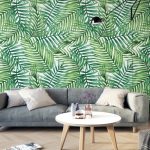Bed linen – how to choose the best one?
Bed linen – how to choose the best one? High-quality bedding will always ensure a comfortable rest and minimize the hassle of washing or ironing it. Is it worth sleeping under silk or cotton? Will you be able to sleep better with satin or wool bedding? Most people choose bedding only on the basis of appearance (pattern), but this cannot be the only selection criterion. Before you decide to buy bedding , think what do you expect from bedding?
Important material
Until recently, there was a view that the best bedding is made of 100% natural fabrics such as: cotton, linen, wool or silk. Nowadays, microfiber is a very big competition for natural fabrics.
Bedding made of natural materials provides 100% ventilation, thanks to which the person sleeping under such bedding does not sweat during sleep (which is very important from the point of view of hygiene – sweat is a good breeding ground for bacteria).
- https://zoozool.pl/ile-bierze-lakiernik-samochodowy/
- https://vag-mania.pl/jak-zostac-ortodonta/
- https://www.kz-walbrzych.pl/wybor-firmy-sprzatajacej-poradnik/
The type of fabric from which the bedding is made also depends on the tactile sensations – warmth, coziness, softness or coolness, and aesthetic impressions – the same pattern on cotton bedding will look different than on wool bedding.
A very important issue when choosing the right bedding is its durability and the way it is washed. Until recently, bedding was washed at 60 or even 90 º C and then ironed. Today, more and more people require bedding so that it does not have to be ironed and can be tumble dried.
 Natural linen with a synthetic blend?
Natural linen with a synthetic blend?
Manufacturers add synthetic fibers to the natural fibers for faster drying, easier ironing and greater durability. It is a very good solution (as long as the admixture of artificial fibers is small), but not for children and people who are allergic. If the admixture of synthetic fibers is 50% or more, the sleep comfort is significantly reduced.
Natural bedding – the best?
Linen made of 100% natural fabrics is not a good environment for the growth of bacteria – due to good ventilation. When choosing bedding made of synthetic materials, remember that the skin will sweat underneath it due to limited air access. </ Div>
Bedding is made of four basic materials: wool, cotton, silk and linen. There are many variants of natural bedding – satin can be cotton, silk and synthetic. Some bedding is a high-end commodity because of its luxurious properties. </div>
100% natural bedding is made of:
-
-
- cotton – this fabric has many advantages and one disadvantage (it creases very much), the most luxurious is Egyptian cotton bedding;
- wool – a synonym of luxury, the most popular woolen fabric is cashmere;
- silk – woven from silkworm threads is an exclusive fabric, on warm, cool days, the touch of silk is a substitute for luxury; popular silk materials include: satin, jacquard and damask;
- linen – is the most anti-static and antiallergic fabric, unfortunately it creases very strongly
-
Other linen fabrics
The type of bedding fabric is determined not only by the original material, but also by the weaving technique. Some fabrics such as: satin, jacquard and damask are made of more than one material. Other materials from which bedding is made are:
-
-
- calico- quite thick fabric, pleasant to the touch; very famous from the PRL;
- flannel – warm and soft fabric covered with a characteristic fluff;
- satin – can be silk or cotton;
- bark- a little rough to the touch;
- damask – made of cotton or silk;
- jersey – woolen or cotton, very durable and good quality;
- batyst – linen or cotton, perfect for summer;
-
Microfiber – a good synthetic material?
Microfiber is a modern synthetic fabric with very high utility values. Microfiber (microfiber) is not only pleasant to the touch, but also breathable, i.e. allows the skin to breathe. It is a very good solution for allergy sufferers due to its antibacterial and antiallergic properties. Microfiber is a very durable material that does not require ironing or washing at high temperatures.
Pattern and color of linen
Unfortunately, for many people, the pattern and color of bedding is the only selection criterion. When choosing bedding for the bedroom, it is worth remembering that it fits the interior – it does not have to be a monochrome combination, you can buy bedding, for example for contrast.
Recently, lemon yellow and black are very popular. Patterns in shades of blue, green and neutral-gray are also popular. Very popular rules for the selection of bedding for the interior are:
-
-
-
-
- for modern interiors – simple geometric patterns fit,
- classic style of the interior – small flowers on the bedding fit best,
- the pattern and color of the bed linen should be in harmony with the bed frame;
-
-
-
Choosing the right bedding is very difficult. However, knowing at least a little bit of material, you can easily choose bedding to suit your needs. However, it is worth buying high-quality bedding – thanks to this, it will serve for many years of use.















